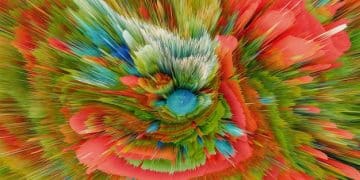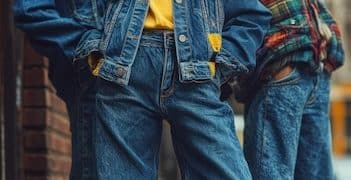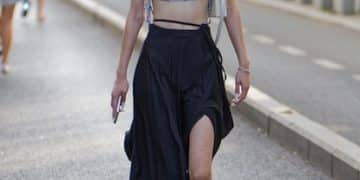Master Accessory Styles: Complete Your Outfits Like a Pro
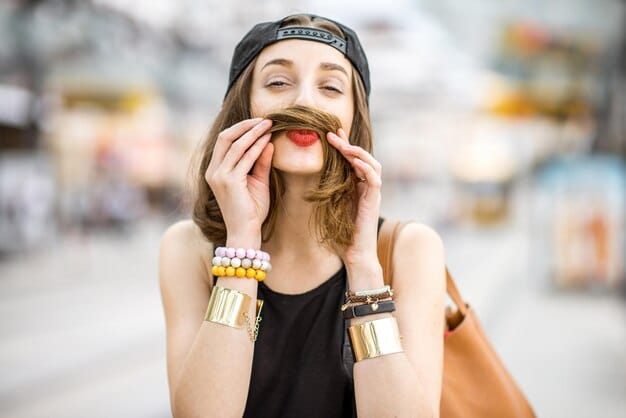
Anúncios
Mastering the art of accessorizing transforms any outfit from simple to stunning, adding depth, personality, and a polished finish that reflects individual style and elevates overall presentation seamlessly.
In the vast landscape of personal style, few elements hold as much transformative power as strategic accessorizing. Learning How to Accessorize Like a Pro: Complete Your Outfits with the Perfect Finishing Touches is not merely about adding trinkets; it’s an art form that elevates your appearance, infuses personality into your wardrobe, and truly makes an outfit feel “complete.” This guide delves into the nuances of selecting, pairing, and wearing accessories, ensuring every ensemble you create speaks volumes about your unique fashion sensibility and attention to detail.
The Foundation of Expert Accessorizing: Understanding Your Canvas
Before diving into the myriad options available, understanding the fundamental principles of accessorizing is crucial. It begins with acknowledging your outfit as a canvas, upon which accessories act as brushstrokes, adding color, texture, and dimension. The goal is not to overpower but to enhance, creating a harmonious balance that elevates the entire look.
Accessorizing effectively hinges on a few key considerations. First, assess the occasion and your desired aesthetic. Are you aiming for casual elegance, sophisticated professionalism, or playful chic? Each context calls for a different approach. Second, consider the inherent style of your clothing. A minimalist dress might benefit from a bold statement piece, while a busy pattern might require more subdued accessories to avoid visual clutter.
The Art of Proportionality and Balance
One of the most common pitfalls in accessorizing is failing to consider proportionality. An accessory, no matter how beautiful, can look out of place if it doesn’t align with your body type or the scale of your clothing. For example, delicate jewelry might get lost against a chunky knit sweater, while an oversized bag might overwhelm a petite frame. It’s about finding harmony between the accessory and the wearer’s physical attributes, and between the accessory and the primary garment.
- Necklaces: A general rule for necklaces is to match their length and bulk to the neckline of your top. V-necks can accommodate pendants or longer chains, while crew necks often pair well with chokers or shorter, bolder pieces.
- Earrings: Consider your hairstyle and face shape. Longer earrings can elongate a round face, while studs or small hoops might be perfect for keeping attention on an elaborate updo.
- Bags: The size of your bag should generally be proportionate to your body and the formality of the event. A large tote for casual daily wear, a structured satchel for the office, and a small clutch for evening events.
Moreover, balancing your accessories across your outfit prevents any one area from looking overloaded. If you opt for a bold statement necklace, perhaps keep your earrings simple. If you’re adorning multiple rings, consider a delicate bracelet rather than an armful of bangles. This approach ensures a polished and thoughtful appearance, rather than a haphazard display.
Ultimately, the foundation of expert accessorizing is about intention. Every piece you add should have a purpose, contributing to the overall narrative of your outfit. By understanding your canvas, considering proportionality, and striving for balance, you lay the groundwork for truly transformative styling.
Strategic Accessorizing: Mastering Jewelry and Watches
Jewelry and watches are often the first accessories that come to mind, and for good reason. They are versatile, personal, and can dramatically alter an outfit’s character. However, true mastery lies not just in owning beautiful pieces, but in knowing how to deploy them strategically to enhance, rather than detract from, your overall look.
The choice between silver, gold, rose gold, or mixed metals can subtly shift an outfit’s temperature and formality. Generally, silver tones often evoke a cooler, more modern aesthetic, while gold imbues warmth and classic elegance. Mixed metals, when done thoughtfully, can showcase a sophisticated fashion palette and offer broader versatility for various clothing colors.
The Power of Layering and Stacking
Layering necklaces and stacking bracelets or rings are popular techniques that, when executed correctly, add depth and dimension. The key is variety in length, texture, and thickness, creating visual interest without chaos. For necklaces, start with a choker or shorter piece, then add progressively longer chains, ensuring each has enough space to be seen.
- Necklace layering: Mix delicate chains with dainty pendants, or combine a bolder chain with a simple, longer necklace. Varying lengths (e.g., 16-inch, 18-inch, 20-inch) is crucial for a waterfall effect.
- Bracelet stacking: Blend different textures like metal, beads, or leather. Incorporate a watch as part of the stack for functionality and style. Keep the scale consistent – either all delicate or all chunky.
- Ring stacking: Experiment with rings on different fingers, or multiple rings on one finger. Mix slim bands with more statement pieces, paying attention to the overall harmony of the metals and stones.
Watches, beyond their utility, are powerful fashion statements. A classic leather-strap watch exudes timeless sophistication, suitable for business and formal settings. A sleek metal watch can add a touch of modern luxury, while a sportier model might be ideal for casual, dynamic looks. The watch should always align with the outfit’s dress code and your personal commitment to a particular style, whether it be vintage charm or contemporary edge.
When selecting jewelry, consider the neckline of your top and the sleeves of your garments. High necklines might call for long pendant necklaces or bold earrings. Open necklines provide an ideal canvas for statement necklaces. Bracelets shine when sleeves are three-quarter length or shorter, allowing them prominence. The interplay between your clothing and your jewelry creates a cohesive and refined image.
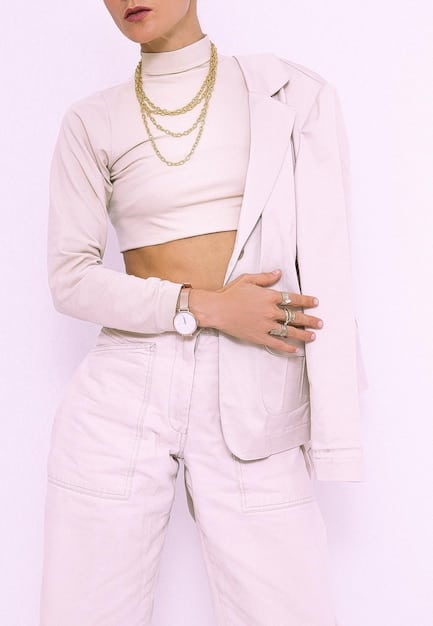
Finally, remember that less can often be more. While layering is artful, over-accessorizing can detract from your outfit and overwhelm your personal presence. Choose a focal point – a statement necklace, a stack of rings, or a striking pair of earrings – and let other pieces play a supporting role. By mastering the strategic use of jewelry and watches, you transform simple garments into intentional fashion statements, reflecting a high level of stylistic expertise.
Finishing Touches: Scarves, Belts, and Eyewear
Beyond jewelry, scarves, belts, and eyewear are quintessential finishing touches that offer unparalleled opportunities for color, texture, and silhouette manipulation. These accessories are not mere afterthoughts; they are critical components that can redefine an entire ensemble, bridging gaps between pieces and elevating an outfit’s overall cohesion and sophistication.
Scarves, for instance, are incredibly versatile. A silk scarf can add a touch of Parisian chic when tied around the neck or bag handle. A chunky knit scarf provides warmth and texture to winter outerwear. They can introduce a pop of color, incorporate a print, or simply add a layer of luxurious softness. The way a scarf is tied can also drastically change its effect, ranging from a neat knot to a dramatic drape.
The Transformative Power of Belts
Belts are underestimated heroes in the accessory world. More than just holding up trousers, they can define a waistline, add structure to a flowing dress, or introduce a crucial textural element. A wide belt can cinch a voluminous top, creating an hourglass silhouette, while a skinny belt can subtly delineate a waist without disrupting an outfit’s flow.
- Cinching: Use a wide belt over a loose dress or oversized sweater to create shape and emphasize the waist.
- Adding interest: A belt with an ornate buckle or unique material (e.g., woven leather, studded) can be the focal point of a simple outfit.
- Color contrast: Use a brightly colored belt to break up a monochromatic look or to complement a secondary color in your outfit.
Eyewear, both corrective and sun protection, has evolved significantly from purely functional items into powerful fashion accessories. The right pair of glasses or sunglasses can frame your face, enhance your features, and convey a distinct persona. Oversized frames can make a bold statement, while classic aviators or cat-eye shapes exude timeless coolness. Consider your face shape and personal style when selecting frames, ensuring they integrate seamlessly into your wardrobe aesthetic.
The beauty of scarves, belts, and eyewear lies in their ability to inject personality and intentionality into an outfit without being overly flashy. They provide opportunities for subtle layering, strategic pops of color, and the creation of flattering silhouettes. By carefully selecting and positioning these elements, you can transform an ordinary outfit into a meticulously styled look that speaks volumes about your attention to detail and understanding of fashion as an art form. These seemingly small additions act as pivotal elements, truly completing an outfit with a professional touch.
The Art of Bags and Shoes: Beyond Utility
Bags and shoes are arguably the most impactful accessories, moving beyond mere utility to serve as cornerstones of an outfit’s narrative. They are not simply functional items for carrying essentials or protecting feet; they are extensions of personal style, dictating an ensemble’s formality, mood, and overall aesthetic. Mastering their selection is paramount to accessorizing like a pro.
When it comes to bags, the adage “form follows function” certainly applies, but “form influences style” is equally true. A structured leather tote speaks of professionalism and sophistication, suitable for the office or business meetings. A casual cross-body bag or a whimsical clutch evokes a different vibe entirely, perfect for weekend outings or evening events. The material, color, and hardware of a bag all contribute significantly to its character and its ability to complement or contrast an outfit.
Shoes: The Ultimate Game Changers
Shoes have a remarkable ability to shift an outfit’s entire tone. A pair of elegant heels instantly elevates a dress or separates, making them suitable for more formal occasions. Conversely, swapping those heels for sneakers or stylish flat sandals can instantly democratize the same outfit, making it appropriate for a casual day out. The choice of footwear is a conscious decision that influences not just comfort, but also the overall perception of your meticulously curated look.
- Footwear Functionality: Choose shoes that align with the activity and environment. Heels for formal, sneakers for casual, boots for inclement weather, etc.
- Color and Material: Consider how shoe color and material harmonize with your outfit. Nude pumps extend leg line, patent leather adds gloss, suede offers softness.
- Statement Shoes: Don’t shy away from using shoes as a focal point. A bold color or an unusual design can be the standout element of an otherwise simple outfit.
Beyond individual pieces, the interplay between your bag and shoes is key. While some designers advocate for matching bags and shoes perfectly as a sign of classic elegance, modern styling often embraces coordinated contrast. For example, a bag in a complementary color or a contrasting texture can add sophisticated depth. A black leather bag might pair beautifully with brown suede boots, creating a rich visual interest rather than a monotonous match.
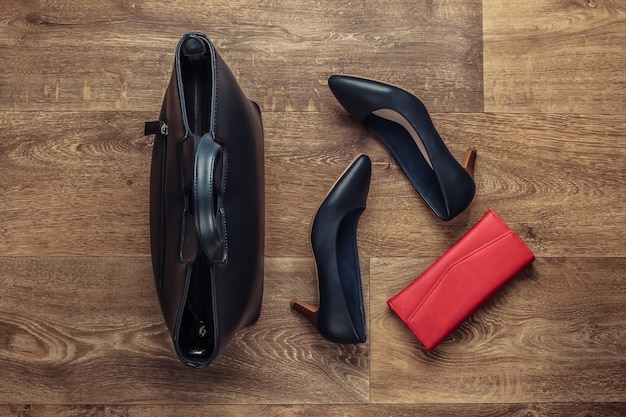
The “hardware” on both bags and shoes – buckles, zippers, chain straps – also plays a subtle yet significant role. Gilt hardware on a bag might call for gold jewelry, while silver hardware pairs well with platinum or silver tones. Paying attention to these small details ensures a cohesive and polished final look. By understanding the profound impact of bags and shoes, you move beyond merely carrying or wearing them; you strategically deploy them as powerful style anchors, completing your outfits with a discerning and professional touch.
Personalized Touches: Hats, Gloves, and Hair Accessories
While often considered seasonal or niche, hats, gloves, and hair accessories offer unique avenues for personalized expression and add distinct character to an outfit. These elements are less about broad appeal and more about amplifying a specific style, mood, or thematic coherence. Integrating them skillfully transforms an outfit into a truly bespoke statement.
Hats, for example, possess an undeniable capacity to define a look. A wide-brimmed fedora exudes effortless coolness, perfect for a bohemian or urban chic aesthetic. A refined fascinator or an elegant cloche hat speaks to vintage charm and sophisticated events. Beyond their aesthetic contribution, hats offer practical benefits, like sun protection or warmth, proving that style and utility can indeed coexist. The key is in selecting a hat that complements your face shape and the overall formality of your attire.
Gloves: Elegance and Edge
Gloves are often overlooked in daily fashion, but they can infuse an outfit with remarkable elegance or a touch of edgy sophistication. Long opera gloves elevate formal evening wear, adding a theatrical flair. Short leather gloves can lend a chic, slightly rebellious edge to coats or even short-sleeved dresses. In colder climates, stylish wool or cashmere gloves are essential, balancing practicality with sartorial flair. The texture, color, and fit of gloves are crucial; a well-fitted pair in a luxurious material can speak volumes.
- Gloves for Formal Occasions: Long satin or silk gloves for evening gowns, matching the dress or providing a subtle contrast.
- Everyday Chic Gloves: Leather or suede gloves in classic colors (black, brown, nude) for outerwear, adding polish.
- Hair Accessories as Jewelry: Use embellished hairpins, headbands, or barrettes to add sparkle or a focal point to your hairstyle, especially for evening or special events.
Hair accessories, from simple headbands and intricate clips to decorative scrunchies and silk scarves, offer a playful and delicate way to enhance an outfit. A jeweled barrette can elevate a simple ponytail, making it suitable for an evening out. A patterned silk scarf woven into a braid or tied around a bun adds a bohemian flair. The choice of hair accessory often reflects the smaller details of an outfit, echoing colors or textures found elsewhere and tying the look together with subtle finesse.
Each of these accessories, when thoughtfully chosen, contributes significantly to the final impression. They allow for an additional layer of personalization, making an outfit truly unique. While they might require a bit more intentionality in their selection and pairing, the reward is an ensemble that feels deeply curated and reflective of a professional’s understanding of style ‘s intricacies. Incorporating these personalized touches is a hallmark of someone who truly knows how to accessorize like a pro, completing every outfit with impeccable detail.
Seasonal and Occasional Adjustments: Accessorizing for Any Context
True accessorizing expertise lies not just in selecting individual pieces, but in adapting those choices to suit different seasons and occasions. What works for a summer beach party will certainly not fit a winter formal event. The ability to pivot your accessory game demonstrates a sophisticated understanding of context and practicality, ensuring your outfits are always appropriate and refined.
Seasonal adjustments often revolve around material and color. In warmer months, lighter fabrics, brighter colors, and natural materials like straw, linen, and rattan come to the forefront. Think straw hats, woven bags, and colorful beaded jewelry. Opt for breathable fabrics in scarves and lighter shoes, like espadrilles or open-toed sandals. The aim is to feel effortless and airy.
Dressing for the Elements and Events
Conversely, colder seasons call for richer textures and deeper hues. Leather boots, wool scarves, layered necklaces over heavy knits, and structured bags in darker tones become staples. Functionality merges with fashion as you incorporate elegant gloves and sturdy but stylish footwear to brave the elements. The accessories should harmonize with the heavier fabrics and more substantial silhouettes of winter wear.
- Formal Events: Opt for minimalist, high-quality pieces. Delicate diamond or pearl jewelry, an elegant clutch, sleek heels. Avoid anything overly bulky or casual.
- Casual Outings: Embrace variety and comfort. Statement earrings, layered necklaces, cross-body bags, stylish sneakers or sandals. Textures can be more playful (e.g., woven, beaded).
- Business Attire: Classic and understated choices. A sophisticated watch, simple studs or small hoops, a structured handbag, closed-toe pumps. Professionalism is key.
Occasional adjustments demand a keen awareness of dress codes and social expectations. A black-tie event necessitates luxurious, refined accessories – perhaps genuine pearls, sparkling diamonds, and a small, elegant clutch. A casual brunch, however, opens the door to more relaxed and expressive choices, such as chunky bohemian jewelry, a vibrant patterned scarf, or a casual denim tote. The goal is to enhance your outfit without looking out of place.
Moreover, consider the practicalities of the event. If you expect to be walking a lot, comfortable yet stylish flats or low heels are a wiser choice than towering stilettos. If you need to carry many items, a larger, more functional bag is preferable to a tiny clutch. The best accessorizing balances aesthetic appeal with real-world needs, preventing any missteps that could detract from your overall presence.
By consciously adapting your accessory choices to the season and specific occasion, you demonstrate an elevated level of style acumen. It’s about making deliberate decisions that reflect respect for the context, ensuring your outfit is always appropriate, polished, and perfectly complete, regardless of where your day or evening takes you. This adaptability is a hallmark of truly professional accessorizing.
Building Your Accessory Capsule: Smart Investments
Just as a capsule wardrobe simplifies daily dressing, an “accessory capsule” streamlines your styling process, ensuring you always have the right pieces on hand to complete any outfit. This strategy is about making smart, foundational investments in versatile pieces that can be mixed and matched, rather than accumulating a vast collection of trendy items that quickly lose their appeal. Building such a capsule is a hallmark of how to accessorize like a pro.
The core of an accessory capsule revolves around timeless, high-quality pieces that transcend seasonal trends. These are the workhorses of your accessory collection, serving as reliable complements to a multitude of outfits. Think classic leather belts, versatile metallic jewelry, and fundamental bags in neutral colors. The upfront investment in quality will pay dividends in longevity, versatility, and the polished look they consistently provide.
Essential Elements of an Accessory Capsule
Start by identifying the classics that resonate with your personal style and wardrobe. These are pieces you’ll reach for again and again, regardless of the fleeting fashion cycles. The goal is to have options that can elevate both casual and more formal ensembles seamlessly.
- Versatile Jewelry: A simple gold or silver chain, classic stud earrings (pearl or diamond simulants), and a delicate bracelet. These can be worn daily and complement most outfits.
- Neutral Belts: At least one black and one brown leather belt, ideally with simple, elegant buckles. Consider one skinny and one wider option for different silhouettes.
- Go-To Bags: A structured black or nude tote for daily use, a versatile cross-body bag for casual outings, and a small clutch for evening events.
- Classic Shoes: Quality black or nude pumps, versatile white sneakers, and a pair of elegant flat sandals or loafers.
Beyond these basics, consider adding a few “statement” pieces that inject personality without being overly trend-driven. This might be a unique scarf, a bold ring, or an unexpected pair of colored shoes. These items add flair and individuality to your capsule, allowing you to express your unique taste within a foundational framework. They should be pieces you genuinely love and that align with your overall aesthetic, ensuring they remain relevant to your style for years to come.
The beauty of an accessory capsule is its adaptability. From this core collection, you can easily add or swap out a few seasonal or trendy pieces without having to overhaul your entire accessory wardrobe. This approach is sustainable, economical, and incredibly effective, ensuring that professional accessorizing becomes an effortless part of your daily routine. By focusing on smart investments and timeless pieces, you cultivate a collection that consistently helps you complete your outfits with an expert touch, demonstrating true savoir-faire in personal style.
| Key Element | Brief Description |
|---|---|
| ✨ Jewelry & Watches | Master layering and choose pieces that complement necklines and outfits, balancing metals and proportions. |
| 🧣 Scarves, Belts & Eyewear | Use these to add color, define silhouette, or frame the face, transforming outfits with subtle flair. |
| 👜 Bags & Shoes | Beyond utility, these dictate outfit formality and mood; ensure coordination or strategic contrast. |
| 👒 Personalized Touches | Hats, gloves, and hair accessories add unique character, reflecting season and personal style. |
Frequently Asked Questions About Accessorizing
Selecting accessories that complement your body shape is about creating visual balance. If you’re petite, opt for delicate, scaled-down accessories. Taller individuals can carry off larger, bolder pieces. For pear shapes, statement necklaces draw attention upwards. Apple shapes benefit from longer necklaces and statement earrings. The goal is to highlight your best features and create harmonious proportions with your chosen accessories.
Mixing metals is a modern and stylish practice, abandoning the old rule of sticking to just one. The key is to do it intentionally. Combine different tones like gold and silver by balancing their proportions or using pieces that already incorporate multiple metals. A good starting point is to choose one dominant metal and use the other as an accent. Ensure the styles of the pieces are cohesive, even if the metals differ, for a polished look.
To elevate a basic outfit, focus on quality over quantity for your accessories. Invest in well-made pieces with good materials, like genuine leather bags, silk scarves, or timeless jewelry with a substantial feel. Pay attention to details like hardware and pristine condition. A structured handbag, a classic watch, or a pair of polished shoes can instantly make a simple outfit appear more luxurious and refined.
While personal style is paramount, certain accessory choices can detract from an otherwise well-put-together look. Overly distracting or ill-fitting items, anything in poor condition (e.g., tarnished jewelry, scuffed shoes), or pieces that clash significantly with the overall aesthetic of your outfit should generally be avoided. Prioritize quality, relevance to the occasion, and comfort to ensure your accessories enhance rather than hinder your appearance.
Incorporating seasonal trends into your accessories is best done through smaller, less expensive pieces rather than major investments. Consider trendy colors for a scarf or handbag, or experiment with a popular jewelry style. This allows you to embrace current fashion without committing to pieces that might quickly go out of style. The core of your accessory collection should remain timeless, providing a solid foundation for endless outfit combinations and easy trend updates.
Conclusion
Mastering the art of accessorizing is a journey of refinement, observation, and personal expression. It’s about understanding that the smallest details can yield the most significant impact, transforming ordinary outfits into extraordinary statements. From the strategic layering of jewelry to the careful selection of bags, shoes, and even less common items like hats and gloves, each accessory contributes to a cohesive narrative. By adhering to principles of balance, proportionality, and contextual relevance, anyone can learn to accessorize like a seasoned professional, ensuring every ensemble is not just worn, but truly completed with an intentional and sophisticated flourish.


